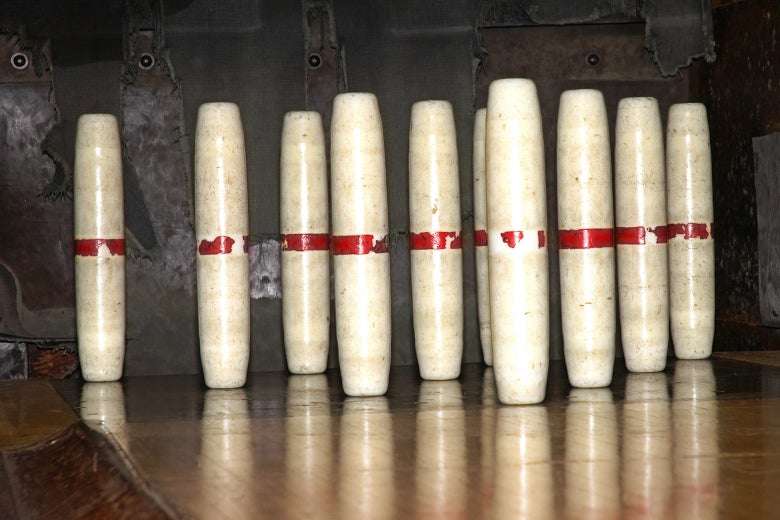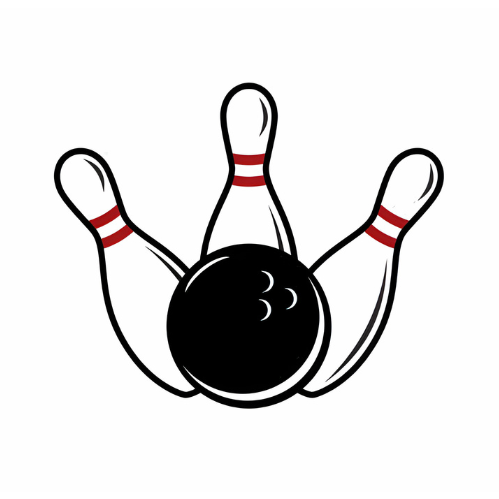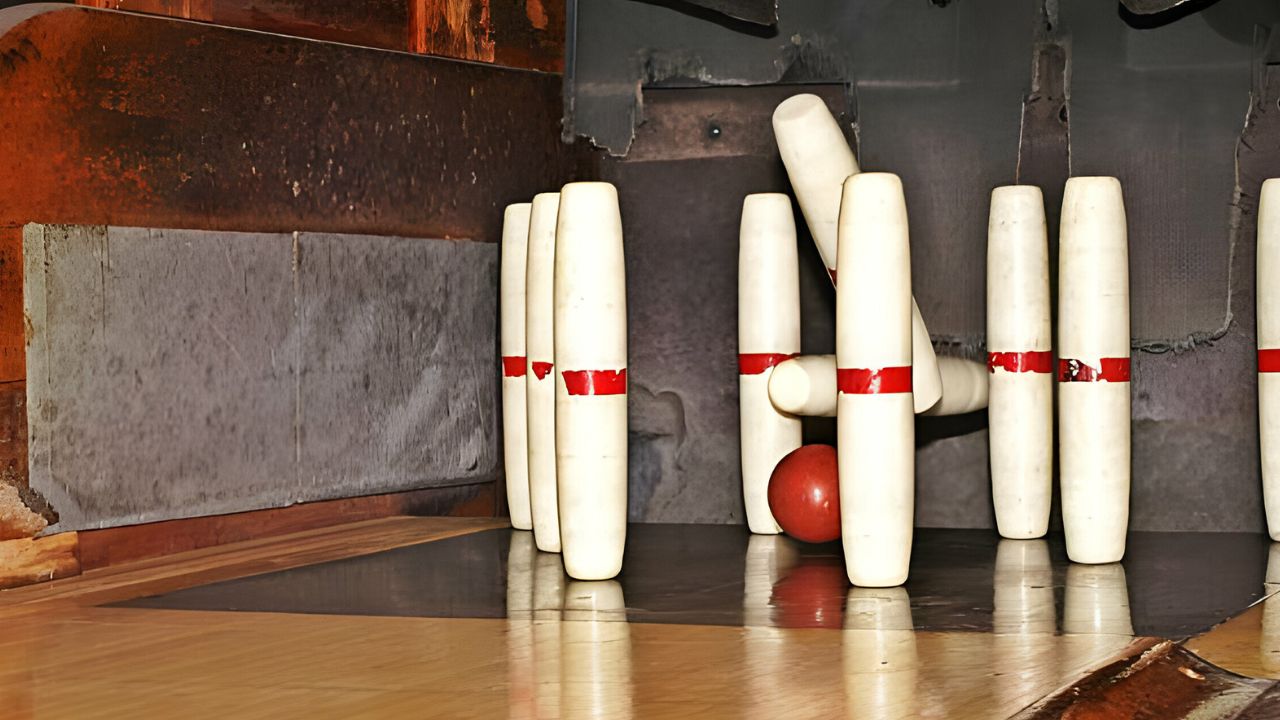Candlepin bowling is a variation of bowling played with tall, narrow pins and small, light balls. Unlike the traditional tenpin game, players get three rolls per frame.
Originating in New England and the Canadian Maritime provinces in the late 19th century, this unique style of bowling offers a different set of challenges from the more widespread tenpin bowling. The candle-shaped pins and the absence of finger holes in the balls demand greater precision and skill, providing an appealing twist for bowling enthusiasts.
With its distinctive rules and equipment, candlepin bowling remains a beloved regional sport that continues to attract both casual players and dedicated leagues, offering a refreshing take on the classic alley experience. Whether you’re a seasoned bowler or new to the lanes, the nuances of candlepin play offer an enticing reason to aim for a strike in this historic game.
Candlepin Bowling Origins
Candlepin bowling is a unique form of bowling. It started back in 1800s New England. Small balls and slim pins set it apart from traditional bowling styles. People used wooden balls at first. Soon, they upgraded to rubber. More changes came as years went by.
The game began to gain real traction in the 20th century. Alleys popped up across Massachusetts and beyond. The sport even landed on TV in the 1950s. That’s when it really started to shape into today’s form. New rules and organizations formed to guide the sport. Candlepin bowling is now a cherished pastime in New England.
The Game’s Unique Characteristics
Candlepin bowling is a unique variation of traditional bowling. One major difference is the ball size. Candlepin bowling balls are much smaller, without holes, and light enough for a child to hold. Players knock down tall, thin pins that resemble candles, hence the name. Unlike the ten-pin game, in candlepin bowling, fallen pins, or ‘dead wood’, remain on the alley. This can change the strategy for the subsequent balls.
The equipment used in candlepin bowling includes three balls per frame for each player, rather than two. The pins are distinctive, measuring slender at nearly 40 cm in height. This makes it challenging to achieve a strike. The playing alley also differs with gutters on each side just like in ten-pin, but the approach to playing the sport varies due to the equipment and pin setup.
| Candlepin Bowling | Ten-Pin Bowling |
|---|---|
| Small, hole-less balls | Larger balls with holes |
| Tall, thin pins | Shorter, wider pins |
| Three balls per frame | Two balls per frame |
| Fallen pins stay down | Fallen pins cleared away |
Rules And Scoring
Candlepin bowling begins by setting up ten pins in a triangle. Players roll a ball towards pins. Each player gets three attempts per frame. To score, knocking down all pins earns maximum points. Spares and strikes work differently than in ten-pin bowling.
Fouls happen with wrong moves. Crossing the foul line leads to penalties. Points won’t count if you foul. Keep your foot behind the line always. Play fair for the true spirit of the game.
| Point Type | Description | Score Value |
|---|---|---|
| Strike | All pins down with one ball | 10 + next two ball’s score |
| Spare | All pins down in three tries | 10 + next ball’s score |
| Pins Down | Each pin knocked over | 1 point each |

Credit: www.youtube.com
Playing Techniques
Candlepin Bowling requires a unique approach to stance and grip. Stand with feet shoulder-width apart, toes pointing forwards. Your grip on the ball should be firm, yet relaxed, with fingers placed in the appropriate holes. Keep your arm swing smooth and consistent for better control. Advanced bowlers might place the ball slightly off-center for desired spin.
For delivering the ball, apply a slight twist to your wrist as you release. This twist imparts spin, aiding in the ball’s trajectory down the alley. Start with a gentle spin and increase as you get comfortable. Accurate ball placement is key; aim between the 1st and 2nd, or 2nd and 3rd candlepins at the head of the formation.
Developing a strategy for scoring strikes and spares is essential. Focus on hitting the ‘pocket’ area for maximum pin fall. For spares, observe which pins remain and adjust your angle and power accordingly. Keep practicing different scenarios to improve accuracy.
Candlepin Bowling Culture
Candlepin bowling holds a special place in the hearts of those from the Northeast. This unique style of the game enjoys a rich tradition, with its roots firmly planted in New England culture. Families and friends frequently gather at local alleys, bonding over strikes and spares.
Many local leagues and competitive tournaments keep the spirit of candlepin alive, drawing players of all ages. These events often become community highlights, showcasing talent and fostering camaraderie. Youth leagues introduce the game to new generations, ensuring that the candlepin legacy continues.
Through birthdays, holidays, and casual get-togethers, candlepin bowling serves as a backdrop for community engagement. Alleys become social hubs where memories are made and shared. Such vibrant scenes affirm the game’s status as a beloved regional pastime.

Credit: slate.com
The Future Of Candlepin
The digital era presents both challenges and opportunities for Candlepin bowling. Technology’s growth can attract younger players. Using apps and social media can spark interest in the sport. Yet, competition with video games and other digital activities is fierce. Engaging the tech-savvy generation is crucial for the game’s survival.
Despite these challenges, the digital tools offer a way to preserve Candlepin’s rich tradition. Sharing stories and images of historical lanes online can inspire nostalgia. Virtual Reality experiences might even simulate the classic game. These tools can bridge the gap between past enthusiasts and today’s audience.
| Challenge | Opportunity |
|---|---|
| Competition with digital entertainment | Engagement through apps and social media |
| Attracting new, young players | Virtual experiences to simulate play |
| Lack of awareness | Online campaigns to share Candlepin stories |

Credit: en.wikipedia.org
FAQ
What Defines Candlepin Bowling?
Candlepin bowling features slim, cylindrical pins and smaller, hand-sized balls without holes. Originating from New England, this unique style is characterized by three-ball frames and slender pins that are 15 inches tall.
How Does Candlepin Bowling Scoring Work?
In Candlepin Bowling, players roll the ball three times per frame to knock down pins. Points are scored for pins knocked over, with a maximum of ten frames per game. Spare and strike scores are calculated with subsequent frame results.
Is Candlepin Bowling Harder Than Tenpin?
Candlepin Bowling is often considered challenging due to the ball’s size and pin shape. The lighter, smaller ball and persistently upright pins demand precise shots, making it tougher to achieve a strike compared to tenpin bowling.
Where Can You Play Candlepin Bowling?
Candlepin Bowling is mainly found in New England and some parts of Canada. Bowling alleys in these regions often offer Candlepin alongside the traditional tenpin lanes, catering to both bowling styles.
Conclusion
Candlepin bowling offers a unique twist to the traditional game. Its smaller balls and distinctive pins present a fresh challenge for enthusiasts. Whether you’re a seasoned player or new to the lanes, trying out candlepin bowling can invigorate your love for the sport.
Give it a roll and experience the excitement for yourself!

